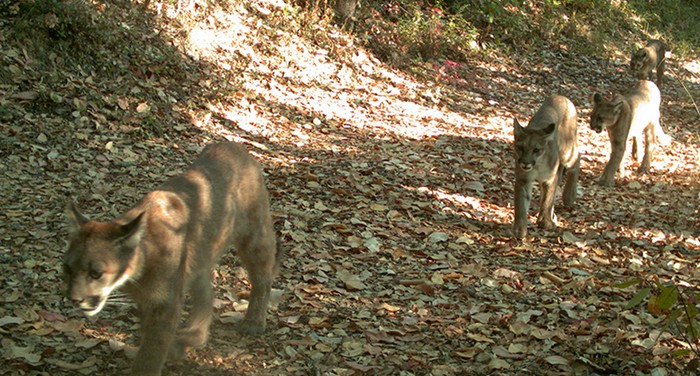Share this article
Wildlife Featured in this article
- puma
- coyote
- bobcat
- gray fox
- raccoon
- striped skunk
- eastern spotted skunk
- ringtail
Wild Cam: When pumas are gone, nothing quite takes their place
Coyotes thrive at Fort Hood, but they don’t fill the role of apex predator
From their perch at the top of the food web, apex predators can shape the ecosystem around them. To understand just how important they can be, it may help to look at places where these keystone species have vanished.
That was the idea behind Alex Avrin’s research on the role pumas play as apex predators. As a master’s student at the University of Illinois, Avrin was interested in how their absence affected the ecosystem around the military installation of Fort Hood, Texas.
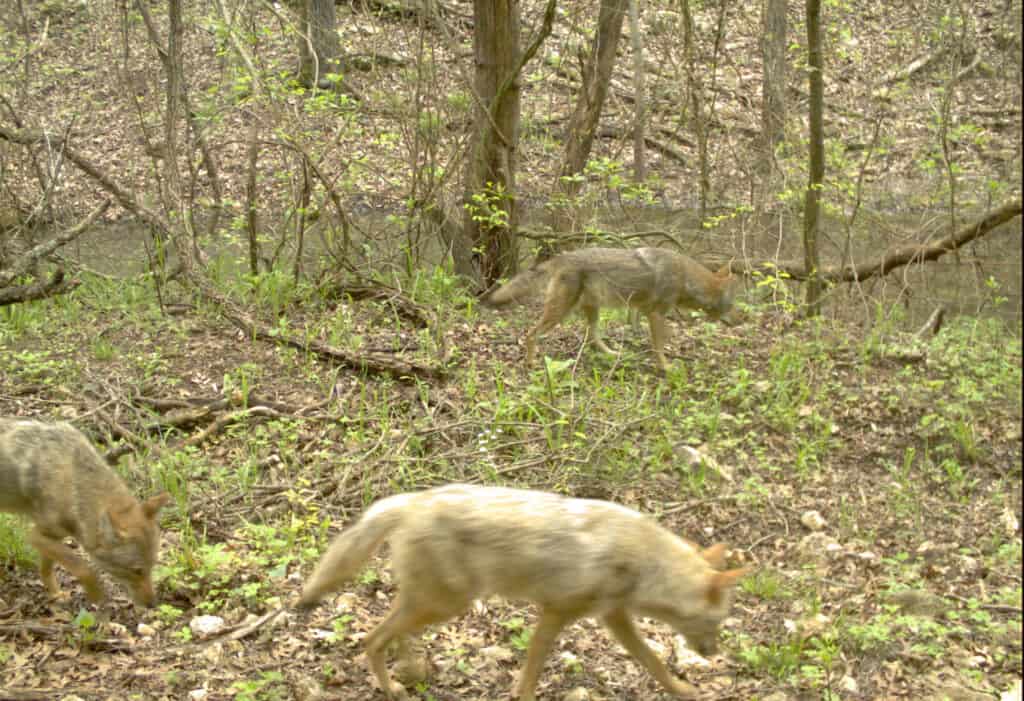
Pumas (Puma concolor) once roamed much of Texas, but by the mid-1900s, predator control efforts and habitat loss extirpated them from all but the state’s southwestern corner. With the apex predator gone, she wondered, would the next largest carnivore—the coyote (Canis latrans)—take its place?
“There’s a lot of research out there on how the loss of apex predators affects an ecosystem, but not as much on how it effects the carnivore community. There is an assumption that coyotes step into that apex role,” Avrin said.
But that didn’t seem to be the case, she found. In some important respects, pumas couldn’t be replaced.
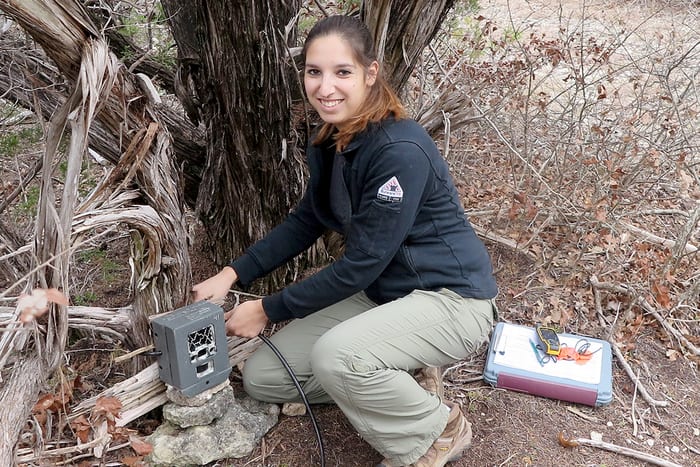
Avrin, pictured above, led a study published in Ecosphere comparing wildlife in Fort Hood with those in the Santa Cruz Mountains in California. Using camera traps, she and her collaborators tried to find out what species were in the area, how they interacted with each other, and if they changed their behavior when larger predators were around.
“Camera traps are a great way to monitor carnivores because they’re so hard to catch,” she said.
Over several weeklong and monthslong sessions between 2011 and 2019, Avrin and her collaborators deployed camera traps to see how mesopredators responded to the presence of pumas in the California mountains, and how small carnivores acted at Fort Hood, where pumas were missing.
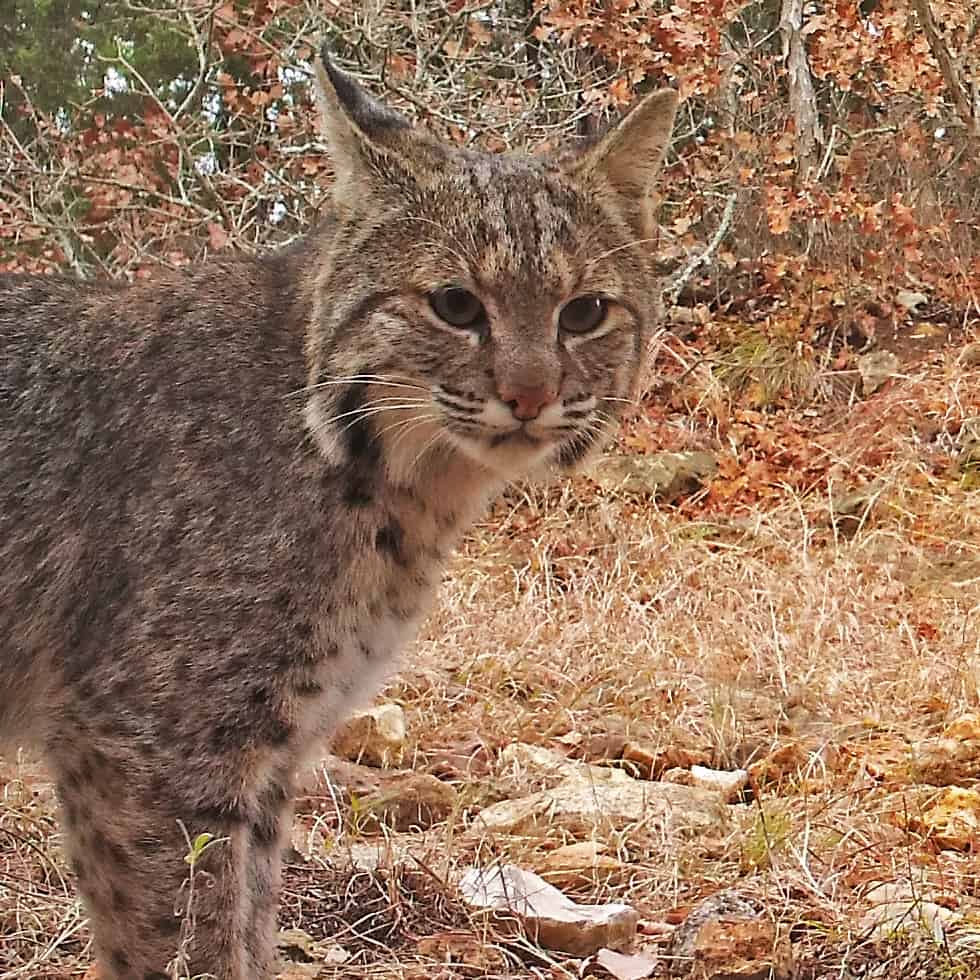
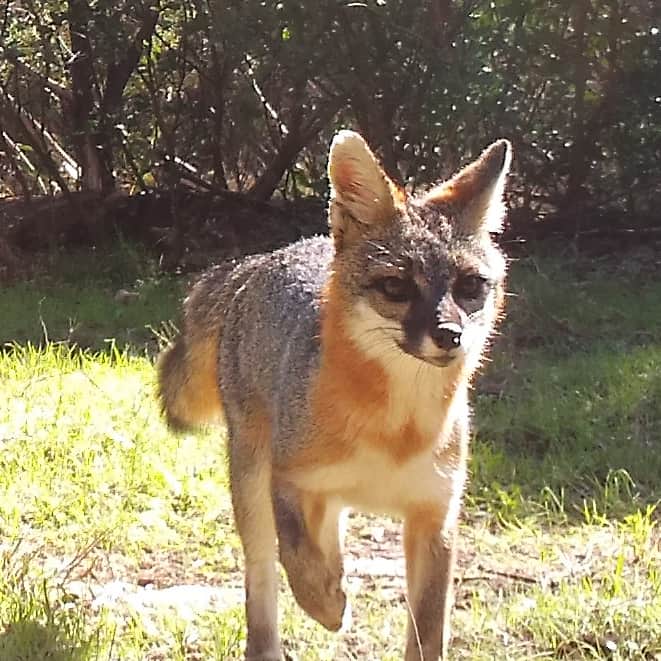
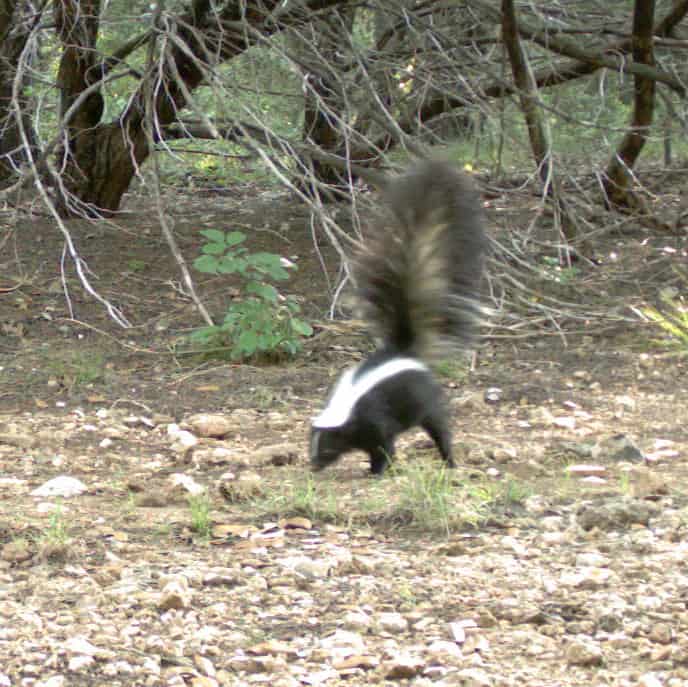
Both sites had lots of coyotes, plus a mix of smaller carnivores—bobcats (Lynx rufus), gray foxes (Urocyon cinereoargenteus), raccoons (Procyon lotor) and striped skunks (Mephitis mephitis). Fort Hood also added eastern spotted skunks (Spilogale putorius) and ringtails (Bassariscus astutus) to the mix.
The two sites “are pretty similar in terms of the carnivore community, although some landscape differences exist,” Avrin said. “It was close enough to do a comparison.”
“They fill an important role in the ecosystem, and there doesn’t seem to be anything else that can replace that.”
Alex Avrin
Despite the similar mix of species, Avrin’s team found big differences in their numbers and behavior at the two locations. In line with previous studies, they found that in California, where pumas were present, coyote numbers were suppressed, allowing smaller carnivores like gray foxes to thrive. Even animals like bobcats and foxes, which tended to avoid pumas when they prowled nearby, still used areas frequented by pumas when the big cats weren’t around. That can have a cascading effect on other species, researchers said. And since pumas tend to leave behind a lot of carrion, a range of scavengers—all the way down to microbes in the soil—can benefit.
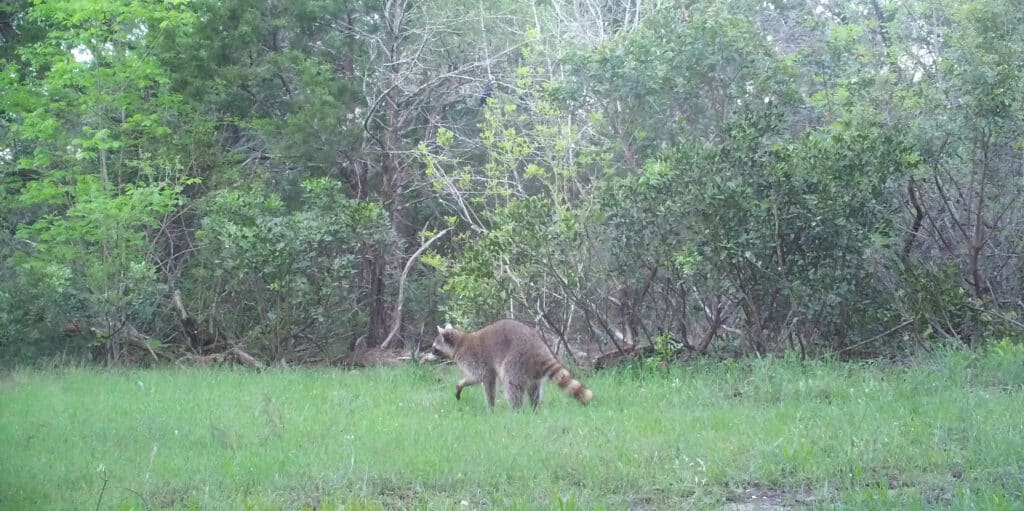
At Fort Hood, where pumas were gone, coyotes’ relative abundance soared 1,250% compared to California. But while they took their place at the top of the food web, but they didn’t play quite the role of apex predator. Rather than just affecting the next largest competitor—bobcats—they appeared to suppress most mesopredators. The exception was raccoons, pictured above. Their relative abundance skyrocketed higher than 3,000%.
The study shows the importance of apex predators, said Avrin, now an environmental scientist with the California Department of Fish and Wildlife.
“They fill an important role in the ecosystem, and there doesn’t seem to be anything else that can replace that,” she said.
This photo essay is part of an occasional series from The Wildlife Society featuring photos and video images of wildlife taken with camera traps and other equipment. Check out other entries in the series here. If you’re working on an interesting camera trap research project or one that has a series of good photos you’d like to share, email David at dfrey@wildlife.org.
Header Image: A new study adds to the evidence that apex predators like pumas play a unique role in ecosystems that smaller carnivores don’t fulfil. Credit for all images: Courtesy Alex Avrin



